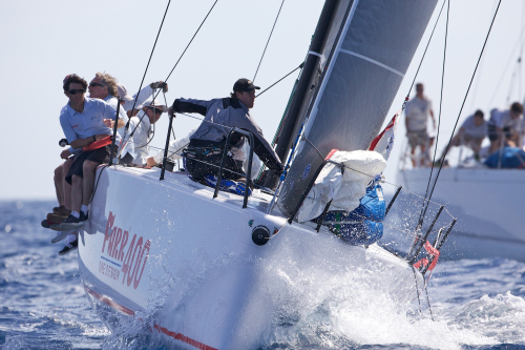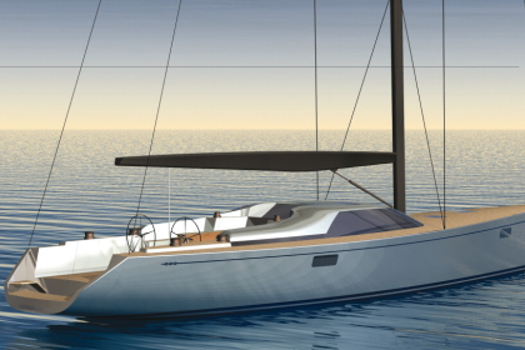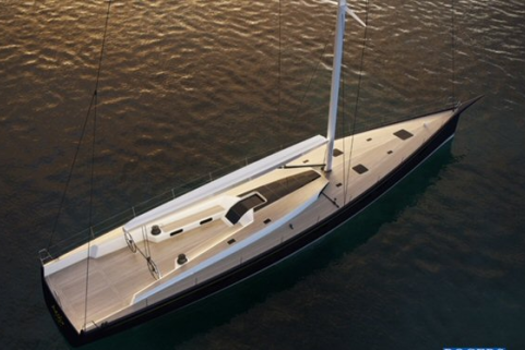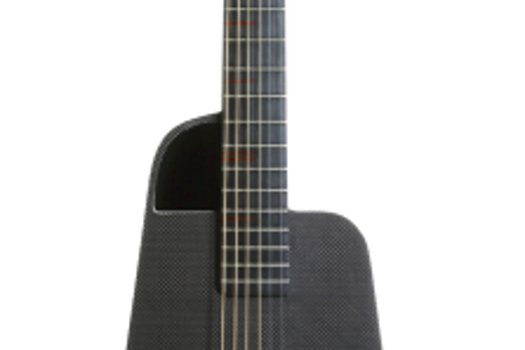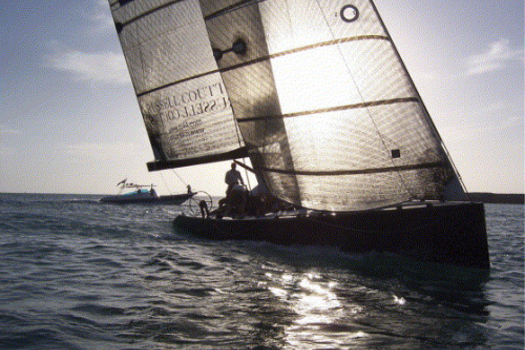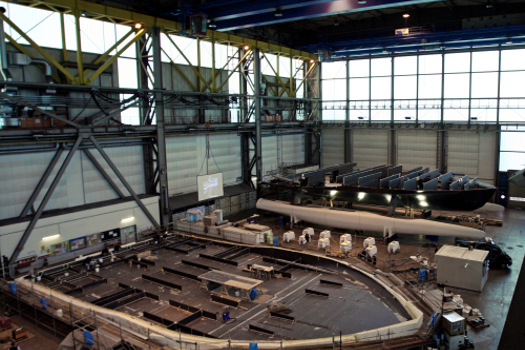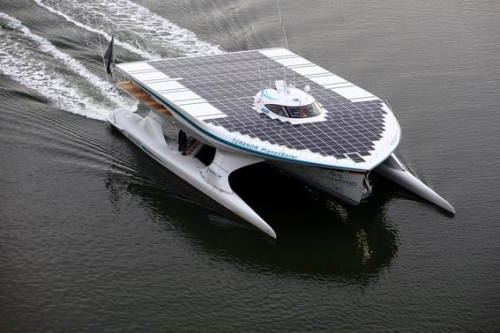
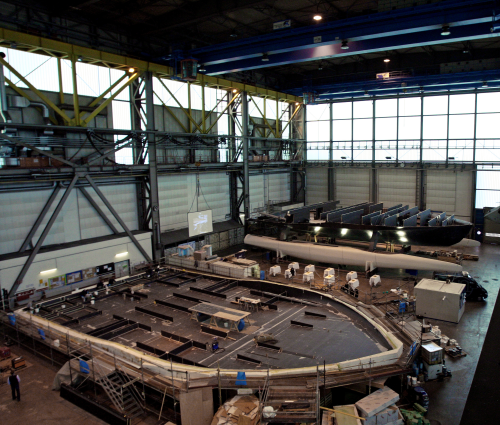
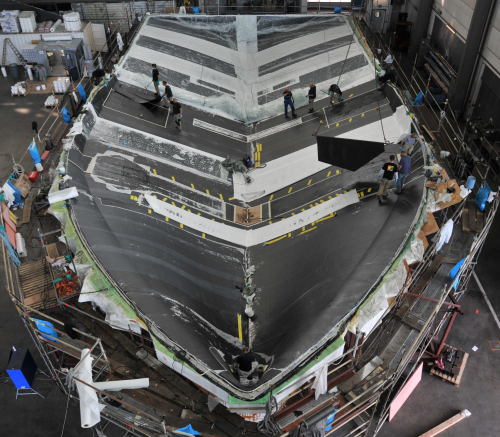
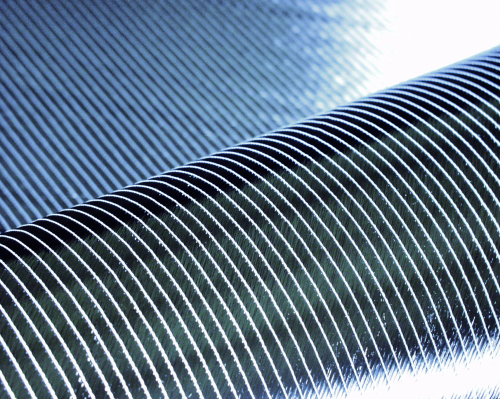
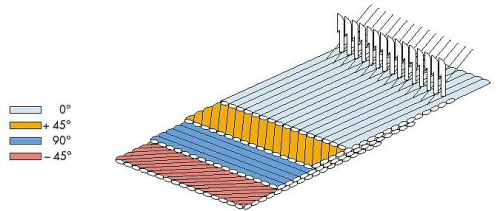
Many spectacular attempts have been made to circumnavigate the globe. Whether by land, sea or air, as soon as the technical opportunities were created, projects sprang up to realise this dream in the most unique way possible. Given the international fame and recognition that attend the achievement of such an ambitious goal, there will probably always be new projects that will fill observers with amazement.
But a project that is certainly unique in the history of such adventures is the circumnavigation of the globe with a catamaran made from carbon fibre reinforced plastic (CFRP) and equipped with the latest photovoltaic technology. Powered entirely by solar energy, the TÛRANOR PlanetSolar is due to set off on its voyage around the world early in 2011.
Raphael Domjan from Switzerland and Gérard d’Aboville from France will be on board the Tûranor PlanetSolar to navigate the 31 m long, 15 m wide craft across the world’s oceans. The adventurer d’Aboville was the first man to row across the Atlantic in 1980, and later, the Pacific.
Minimising weight
The catamaran is fitted with more than 500 m2 of solar modules. The photovoltaic cells mounted on the deck and on flaps at the stern and sides give the craft its characteristic appearance. But one of the biggest challenges has been to store enough solar energy so that the vessel can maintain its progress even in darkness. To achieve this, use has been made of the latest lithium-ion batteries, which weigh around 11 tonnes in total. The batteries are housed in the left and right floats – the two hulls that run the full length of the boat.
To minimise consumption of precious energy as the craft cruises along, it was necessary to save as much weight as possible in the boat structures by employing modern lightweight construction technology. Through the use of carbon fibre composite in the hull structure, the requirements for excellent mechanical properties combined with very low weight were successfully met.
The four electric motors are driven by a massive power supply and provide a maximum output of 120 kW. The catamaran is moved and steered by two large propellers, which are also produced from carbon fibre materials and fitted on the end of each float. The propellers can be independently controlled to steer the craft on the desired course. The maximum speed is approximately 14 knots.
PlanetSolar‘s virtually silent and pollution-free circumnavigation of the globe is scheduled to take about 160 days. Several stops along the equator are planned to give a wider international audience the opportunity to learn more about this unique project.
The giant catamaran is currently being finished in the Knierim Yachtbau shipyard at Kiel in northern Germany, and initial tests have already been successfully completed following the christening and launch of the vessel on 31 March 2010. But before it can set off on its voyage around the world in early 2011, a considerable amount of detailed work and trials have still to be carried out to guarantee the success of the project.
Composite construction
Knierim Yachtbau is an established company that specialises in building individual high-tech yachts. It has already made a name for itself in a wide variety of projects as one of the leading manufacturers of innovative yachts constructed with composite materials. For example, Knierim Yachtbau successfully implemented projects such as the ‘UCA,‘ one of the largest German ocean racing yachts, and the ‘Container‘ in 2008. The first German America’s cup yacht, ‘Germany 1,‘ also came from the Kiel shipyard. Knierim Yachtbau recently introduced a new 10 m long, thoroughbred racing yacht with a fast, ultra-modern hull shape, which is set to create quite a stir. Here again, it used the favourable properties of carbon fibre composites in the construction of the hull, as did the mast maker for the mast.
The Kiel shipyard has over 40 years’ boat building experience and has developed great expertise in the use of composites, and carbon fibre materials in particular. So it is not surprising that, in planning the TÛRANOR PlanetSolar, it was decided to use carbon fibre again.
The catamaran had to be lightweight and yet at the same time extremely stable in construction to meet the exacting demands of the open sea. After several proposals, ranging from a single-hull boat to a trimaran, the company finally opted for a double-hull design by Craig Loomes, director of the LOMOcean company in New Zealand. The design of the TÛRANOR PlanetSolar catamaran is based on the so-called ‘wave piercer’ principle. This means that the two catamaran hulls are designed to slice through the waves in rough seas, so helping the craft adopt a stable, solid position in the water.
The high stresses expected in foul weather conditions during the voyage made it necessary to use high strength carbon fibre for the hulls. Steffen Müller, one of the two managing directors of Knierim Yachtbau, points out that the stresses under storm conditions should not be underestimated, since in very high seas, the central hull will also thrust through the waves.
In the production of the hull in Kiel, most of the work was carried out using the hand lay-up process with vacuum compression, which made it possible to ensure an optimum fibre volume content. The moulds for the hull were produced by Knierim Yachtbau itself, which has its own CNC 5-axis milling machine to make the master patterns and the moulds.
The Knierim shipyard‘s Tooling division also designs and produces moulds for the wind power industry, e.g. for rotor blades, and for automotive components. The moulds for the TÛRANOR PlanetSolar are based on a steel bottom frame and a Styropor block, which was machined to the correct contours using the CNC milling machine. Coated with high quality epoxy pastes the moulds were then shaped to the final contours by repeated finishing to give them a high quality surface. Owing to the immense size of the yacht, the moulds for the hull structure and the deck were each divided into three different sections and then assembled in the production hall to give the complete mould.
Altogether, more than 20 tonnes of carbon fibres, 11 tonnes of foam core and 20 tonnes of epoxy resin and hardener were used in the construction of this boat.
Carbon fibre
Carbon fibre materials were supplied by the SGL Group, headquartered in Wiesbaden, Germany. In the construction of the TÛRANOR PlanetSolar, the Knierim shipyard used three different carbon fibre materials from SGL: a unidirectional fabric; a bidirectional fabric with weights of 300-400 g/m2; and a SIGRATEX® woven carbon fabric with similar weights.
| If you would like further information about any of the issues covered in this feature please e-mail us. |
In the construction of multilayer fabrics such as bidirectional fabrics, the different layers are applied with the required alignment to one other (e.g. ±45°) and then stitched together fully automatically with polyester thread. This method produces very good cohesion of the individual fibre rovings and allows the fabric to be more easily placed and aligned in the hull mould.
Another advantage of these fabrics is that, unlike in woven fabrics, the fibres are always straight and non-crimped. As a result, the intrinsically very high strength and stiffness values of the carbon fibres are retained and mechanical tensile and compression forces can be optimally absorbed by the composite structure.
In addition to unidirectional and bidirectional fabrics, special structures with three or four layers can be tailored to meet particular load-bearing requirements.
By using these multilayer fabrics, it is possible to reduce the work involved with placing the material in the mould. Instead, only one complete fabric consisting of different individual layers with different fabric weights needs to be placed. This represents a saving in production time and costs for the user. In hand lay-up with vacuum compression or vacuum infusion, these fabric designs allow good impregnation of the individual rovings and so result in high component quality.
In the production of these fabrics, SGL uses mainly the SIGRAFIL® C carbon fibres manufactured in its plants in Scotland and the USA. At present, two different types are produced at SGL, a 50K heavy tow carbon fibre and a 24K carbon fibre. The standard feedstock used for these fibres is polyacrylonitrile (PAN), which is based on a highly polymeric organic substance with a high carbon content. Through the successive processing steps of oxidation and carbonisation carried out at carefully controlled temperatures, the basis of the subsequent carbon fibres is created. These processing steps are followed by surface treatment to apply different sizings such as polyurethane or epoxy. In the case of the TÛRANOR PlantSolar project, the carbon fibres used were those with an epoxy sizing.
Before the different woven and multiaxial fabrics were used in the TÛRANOR PlanetSolar yacht, they first had to be certified to the special marine requirements of Germanischer Lloyd (GL), together with the SGL SIGRAFIL C carbon fibre.
Unique project
The TÛRANOR PlanetSolar yacht is an excellent example of the opportunities opened up by using modern carbon fibre materials. Built with high-performance materials and equipped with the latest technology, the carbon catamaran fulfills all the requirements of a unique and prestigious project. As in other industries where eco-friendly drive concepts are required for the future, this yacht represents a milestone in international yacht building thanks to its lightweight construction and photovoltaic technology.
It will take an estimated 68 000 man hours before the 85 tonne craft is completely finished. The great moment will come in spring 2011, when the yacht will set off on its voyage around the world. The plan is to start in the Mediterranean and then circumnavigate the globe in a westerly direction. Points of call on this adventure will include cities such as New York, San Francisco, Singapore and Dubai. We look forward to following the progress of this adventure and hope for a successful and safe voyage around the world.
|
Besides producing graphite electrodes and graphite components, the SGL Group specialises in the manufacture of carbon fibres and carbon fibre-based semi-finished products such as woven fabrics, multiaxial fabrics and prepregs, and the design and production of complete components made from carbon fibres. SGL produces woven carbon fabrics and multiaxial fabrics at different sites in Germany. The SGL Kümpers plant at Lathen specialises mainly in the production of glass fibre and carbon fibre multiaxial fabrics. At Lathen, SGL manufactures various multiaxial semi-finished products which are used for applications such as rotor blades for the wind power industry. These blades must be as lightweight as possible but also have extremely high torsion resistance. Another area of activity for SGL is in high-performance yacht building, which extends its previous typical application fields such as wind energy, automotive manufacture, medical technology, aerospace engineering and numerous other industrial applications. |
This feature was published in the July/August 2010 issue of Reinforced Plastics magazine.

